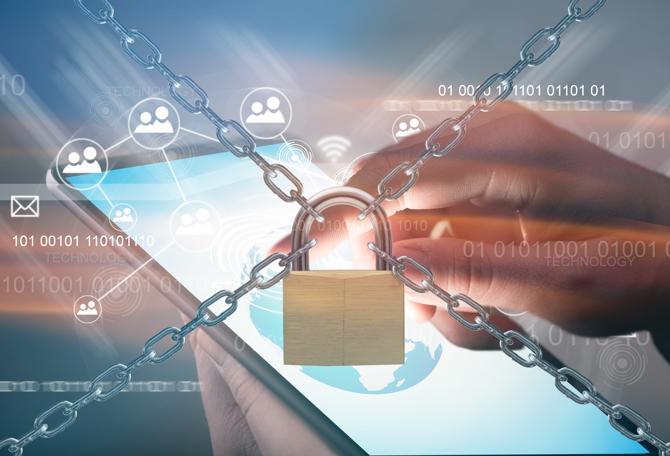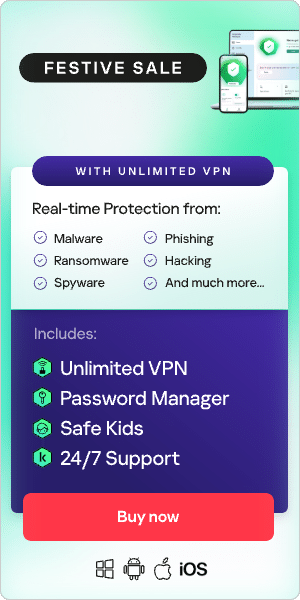
What is data leakage?
Data leakage, or data leaking, is the exposure of sensitive data to cybercriminals. The information can be personal or related to a business or organization. The leak can occur electronically, such as through the internet or by email, but it may also happen physically, such as through laptops and other devices, or storage devices like USBs and external hard drives.
Whether the victim is a private individual or a high-profile company, data leaking can result in major, detrimental repercussions. While the implications of a data leak for an individual can be personally devastating, the effects on an organization occur on a larger scale, causing damage to their public reputation or massive financial losses, for example.
As such, it is important to understand how data leaks occur, what can happen as a result, and the various ways to prevent data leakage. For businesses, it is especially crucial to learn how to implement mitigation strategies at an organizational level, whether that involves training employees or using data loss prevention technology or dark web monitoring
The difference between a data leak and data breach
For the average person, the terms “data leak” and data breach” are interchangeable. However, it can be helpful to understand the distinctions between the two.
Simply, a data leak is the accidental exposure of sensitive information while a data breach is the intentional stealing of data through a cyberattack. Although both situations involve the compromising of privileged information, the intent and cause behind each is different.
More specifically, data leakage can be the result of negligence, or insider action while data breaches are results of attackers intentional actions – such as exploiting vulnerabilities.
Admittedly, there is some grey area between the two terms. This is because cybercriminals often use the information harvested from a data leak to execute a data breach. For example, the leaking of an employee’s login credentials can be used to launch a full-scale data breach of a company.
How does data leakage occur?
It is important to understand that data leaking is not always the result of a cyberattack. Instead, it is more usually the result of human error—or malicious actions. As such, one of the most important ways to prevent data leakage is to understand how it happens in the first place.
These are some of the most common methods of data leaking:
-
Bad infrastructure: The wrong settings and permissions, outdated software, and badly configured networks can all be vectors for data leakage.
-
Social engineering attacks: These are a persistent cybersecurity threat and include phishing and spear phishing.
-
Bad password hygiene: Most people make it easy to guess logins through credential stuffing and dictionary attacks, for example, by reusing passwords or creating weak passwords.
-
Losing a device: If a cybercriminal hacks into a lost device, they can gain access to all data stored on it.
-
Software vulnerabilities: Cybercriminals can easily exploit weaknesses in software, which can lead to various consequences, including a data breach. This is why keeping all software up to date—and deploying the latest security patches—is essential to data breach prevention.
-
Human factor: Sometimes, disgruntled employees or third parties may actively choose to target a company or organization by leaking data themselves.
-
Negligence: Sensitive data is sometimes stored on external hard drives or USBs—or sometimes even written down—and left where they can be accessed by others Human error also may result in data leakage— for example, if an
What can a data leakage prevention solution protect?
The overarching goal of data leaking is for cybercriminals to accumulate information that they can use for financial or other gains. There are numerous types of data that threat actors can steal and use to their advantage, and these can be related to either private individuals or companies and organizations.
Some examples of the types of data sought in data leakage include:
- Personally identifiable information (PII): These are data linked to individuals, including email addresses, social security numbers, credit card numbers, and dates of birth, that can be used to perpetrate identity theft.
- Client or customer databases: These might include their personal or account information, payment details, order history, etc.
- Company information: Data leaking often covers privileged company information like internal documents or emails, accounts, performance statistics and projections, strategies and plans, and HR records.
- Trade secrets or intellectual property (IP): This is confidential information that gives a company a competitive advantage and may include patented designs and formulas, proprietary technology, source code, and commercial strategies.
- Financial details: This is any data pertaining to an individual’s or organization’s finances, such as tax records, bank statements, and invoices.
- Login credentials: For example, usernames and passwords which can be used to perform account takeovers on a victim’s email or social media accounts.
By gaining any of the above information through data leaking, cybercriminals have the means to perpetrate further crimes, including identity theft, financial fraud, and extortion. This is why it is essential that individuals and companies take care to strengthen their data loss prevention cybersecurity.
How is the information from data leakage used?
Once they gain all of this valuable data, cybercriminals have the ability to then perform numerous other crime. This is why data leaks are so dangerous and why data leakage prevention is so crucial. With the information they steal through data leaking, attackers can:
- Execute further cybercrimes, such as phishing attacks, using social engineering techniques.
- Commit different types of financial fraud, including credit card fraud.
- Steal the victim’s identity.
- Launch a doxing campaign against the victim.
- Add the information to a database that can be used in surveillance and intelligence for nefarious purposes.
- Negatively impact a business’s reputation.
- Cause disruptions to operations.
- Sell the data to other cybercriminals on the dark web.
- Extort the victim/organization for financial gain.
Data loss prevention for cybersecurity
Data leakage will continue to be a persistent threat in a digital-first society, and cybercriminals will try ever-more sophisticated methods to execute these attacks. However, there are several strategies and measures that users can implement to minimize the chances of these attacks occurring successfully. Here are some recommended best practices for data leakage prevention:
- Implement data security measures and audit these regularly to prevent data leakage; this is especially important for regulatory compliance.
- Use data loss prevention tools to protect sensitive information stored on the organization’s systems.
- Monitor access and activity—having visibility over a network makes it easy to identify suspicious behavior and is an important part of how to prevent data breaches.
- Adhere to the principle of least privilege, ensuring that employees, contractors, or other stakeholders only have access to as much data as they need for their roles, so that there is no chance of data leaking through these individuals.
- Implement cybersecurity awareness training across the organization and regularly update this so that employees are aware of current threats and how to avoid them.
- Regularly delete old and unnecessary data, or store them away from the main network so they are more difficult to access.
- Implement strong passwords and secure password management systems, such as using a trustworthy password manager.
- Constantly assess and monitor third-party risks to ensure data loss and prevention through supply chain attacks.
- To prevent data leakage from internal sources, put a strong offboarding system in place so that when an employee leaves, they have no access to networks, files, devices, and other potential attack vectors.
- Where possible, use multifactor and biometric authorization to protect access to organizational devices and systems.
- Consider using data encryption to protect sensitive data that is most at risk.
- Continuously monitoring the dark web allows for the detection of both fake and real breach-related posts, as well as the tracking of spikes in malicious activity. Given the resource-intensive nature of dark web monitoring, external experts often take on this responsibility.
Learning how to prevent leakage and data breaches
Data leaking is often the first step in a data breach, and the repercussions of these incidents can be massively impactful, especially for businesses. For this reason, organizations must be especially cognizant about protecting their data, and take steps to understand the issue and implement strategies for data leakage prevention. Offering comprehensive cybersecurity awareness training so that employees understand the threat of data leaking and are equipped with basic cybersecurity safety principles is one way to do this. But, it is important to take other steps, too, such as protecting organizational data and using data loss prevention tools. Working in tandem, this can minimize the chances of data leaking and companies’ exposure to other cybersecurity threats.
Related Articles and Links:
Learn about malware and how to protect all your devices against it
What to do if your personal privacy is breached
Related Products and Services:





